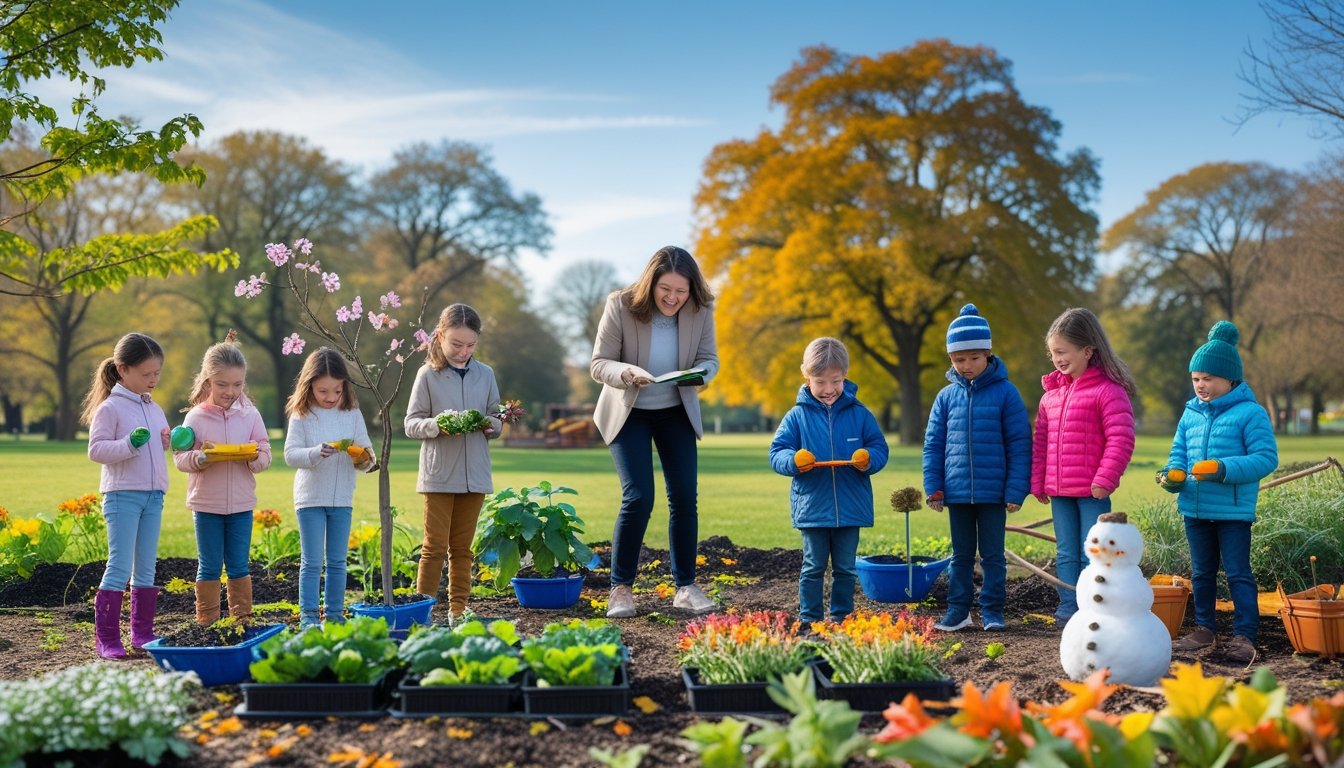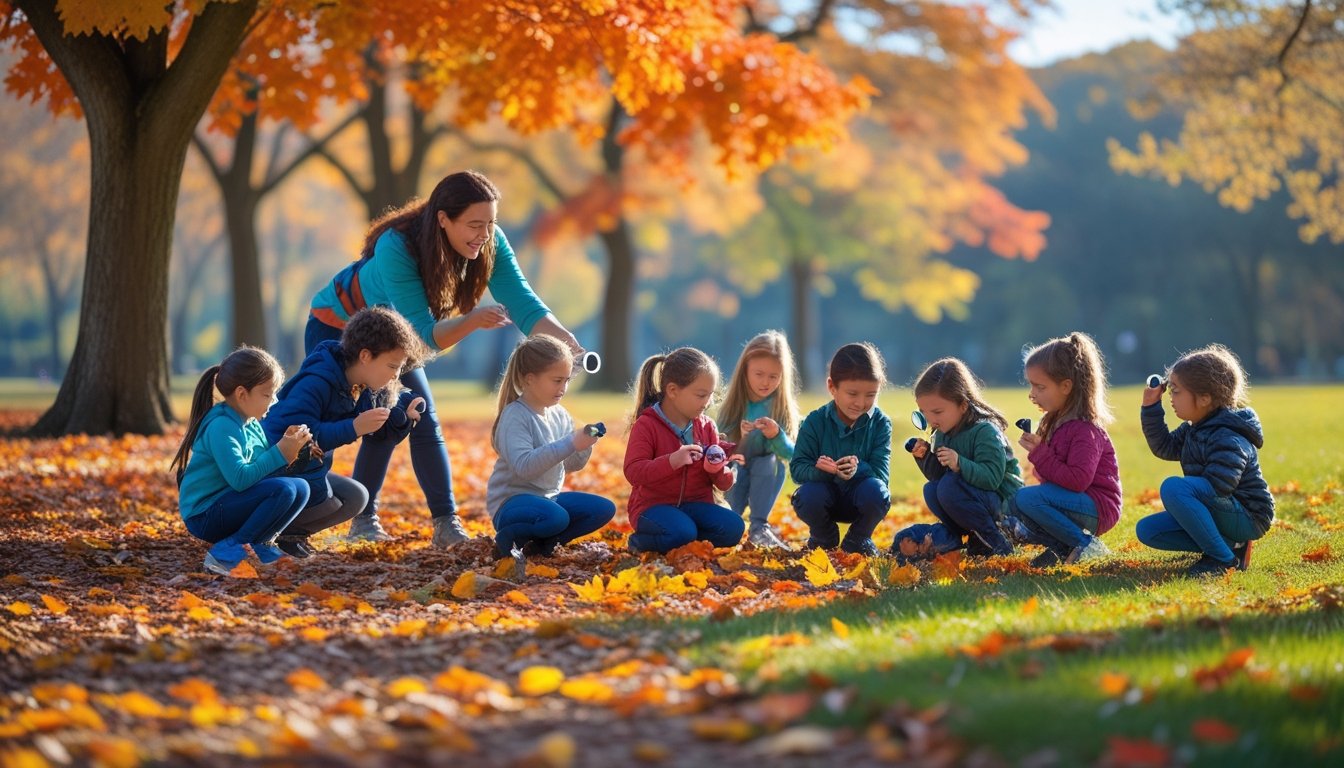Late updated: 13 Aug 2025 08:08
Written by:
Exploring Seasonal Educational Outdoor Activities: Inspire Learning All Year Round
Exploring the outdoors through the lens of education allows us to tap into a dynamic world that energises the learning experience. By integrating seasonal activities into our educational approach, we can stimulate curiosity, foster creativity, and nurture a genuine connection to nature. Outdoor activities that align with the seasons offer an enriching and engaging way for learners to discover new concepts in a natural setting.

Each season brings with it unique opportunities to explore and learn. From observing the life cycles of plants in spring to understanding snow science in winter, these outdoor activities actively enhance the educational journey. Moreover, engaging with the natural world not only bolsters academic performance but also promotes physical well-being and emotional health.
As we dive into seasonal educational outdoor activities, we invite you to join us in discovering enriching methods that transform learning. By stepping outside, we offer students the chance to explore and grow in an environment that extends well beyond the confines of a traditional classroom.
Key Takeaways
- Seasonal activities enhance learning through nature.
- Different seasons offer distinct educational experiences.
- Outdoor learning supports both academic and personal growth.
Fundamentals of Seasonal Educational Outdoor Activities

Our exploration of seasonal educational outdoor activities delves into how seasons and weather inform learning experiences, the value of hands-on and experiential learning, and the importance of environmental awareness and sustainable practices.
Role of Seasons and Weather in Outdoor Learning
Seasons and weather play a pivotal role in shaping outdoor learning opportunities. Each season offers unique activities that align with its climate. In spring, we can focus on seed planting and observing new growth. Summer might lead us to water exploration and beach studies, whereas autumn invites us to leaf collection and wildlife observation.
Weather conditions can both enhance and hinder engagement. Rain may hinder certain activities, yet it provides learning on water cycles. By aligning educational activities with natural changes, we create dynamic learning environments that heighten curiosity which is vital for young learners.
Benefits of Hands-On and Experiential Learning
Hands-on and experiential learning provide tangible benefits by actively engaging learners. Direct interaction with nature helps foster understanding and retention of educational concepts. Instead of just reading about photosynthesis in a textbook, children planting flowers witness this phenomenon firsthand.
An outdoor classroom offers the opportunity for experiential learning, enhancing cognitive and social skills. Learning becomes a multi-sensory experience. The unpredictability of nature ensures that each activity is a new lesson, keeping engagement levels high. By involving students directly in activities, we cultivate a deep connection and understanding of the natural world.
Environmental Awareness and Sustainable Practices
Incorporating environmental awareness and sustainable practices is integral to outdoor education. Participating in activities like recycling or composting educates children on the importance of sustainability from a young age. This foundation encourages responsible habits. It also empowers children to engage in environment-friendly practices in their daily lives.
Sustainable outdoor activities help students appreciate biodiversity and ecosystems. They learn the impact of human actions on the environment, fostering informed stewardship. By embedding these lessons in our educational activities, we ensure learners are not just passive recipients but active contributors to environmental conservation.
Inspiring Seasonal Activities for Outdoor Learning
Exploring nature through seasonal activities offers opportunities for educational growth, enhancing creativity and critical thinking. These activities allow us to connect with the outdoors, promoting cognitive development and resilience in various weather conditions.
Spring Activities: Nature Walks, Gardening, and Bird Watching
In spring, we embrace the outdoors through engaging activities that highlight the awakening of nature. Nature walks provide a chance to observe signs of new life, such as budding plants and active wildlife. This awakens curiosity and sharpens observation skills. During our walks, we often engage in bird watching, a soothing yet stimulating activity that encourages patience and attentiveness.
Gardening projects can introduce children to plant life cycles. By planting seeds, we witness firsthand the transformation they undergo. This hands-on exploration cultivates an understanding of ecosystems and the importance of nurturing the environment. It also enhances fine motor skills and instils a sense of responsibility and accomplishment.
Summer Learning: Water Play, Science Experiments, and Sensory Exploration
Summer's warmth invites us outdoors to explore activities that combine fun with learning. Water play offers not only relief from the heat but also endless learning opportunities. Whether it’s exploring buoyancy or observing ripple patterns, water provides a medium for playful scientific exploration.
Our science experiments can include creating simple weather instruments. These engage children's innate curiosity, helping them understand climate, temperature, and seasonal changes. Further, sensory exploration activities utilise natural materials like sand, leaves, and flowers. By engaging multiple senses, we're able to enhance cognitive development and inspire creative expression.
Autumn Engagement: Nature Crafts, Pumpkin Science, and Harvest Festivals
Autumn's vibrant colours set the stage for creative and educational activities. We make use of nature crafts using leaves, acorns, and other natural materials to encourage creativity and fine motor skills. These crafts serve as a bridge between imagination and the tangible world around us.
Pumpkin science taps into the season’s bounty to teach concepts like buoyancy and mass. By carving pumpkins, we explore life cycles and growth patterns. Harvest festivals offer a communal experience that celebrates nature’s abundance, allowing us to share our learning with others and promote teamwork and community spirit.
Winter Adventures: Snow Exploration, Weather Studies, and Resilience Building
Winter challenges us to embrace the cold and explore its wonders. Snow exploration activities, such as creating snow sculptures or experimenting with snow melting, captivate us while fostering creativity. The tactile experience of snow enhances sensory perception and encourages open-ended play.
Our weather studies sharpen our understanding of climate and weather patterns. We discuss concepts like temperature variations and precipitation types. Additionally, winter activities focus on resilience building, as they often require us to adapt to harsh conditions. Through outdoor play and exploration, we foster perseverance and adaptability, skills critical for personal growth.
Frequently Asked Questions

We understand that outdoor education provides unique opportunities for children across different age groups. Here, we're addressing common questions to help educators and caregivers explore effective outdoor activities tailored to various developmental stages.
What are some age-appropriate outdoor learning activities for early years?
For young children, sensory exploration activities such as leaf rubbing and mini-beast hunts are ideal. These activities encourage curiosity and develop fine motor skills. Simple games like nature scavenger hunts can also introduce them to plant and animal identification in a playful manner.
How can high school programmes integrate outdoor education effectively?
High school programmes can incorporate outdoor education by linking practical field studies with subjects like biology and geography. More immersive experiences such as camping trips or survival skills workshops can foster teamwork and environmental awareness among students.
What are the benefits of outdoor exploration activities for preschoolers?
Outdoor exploration for preschoolers nurtures their physical development and enhances social skills. Through play, they learn problem-solving and gain confidence. Activities like building with natural materials or simple gardening also encourage creativity and a sense of responsibility.
Can you suggest outdoor learning activities suitable for students aged 3-5 years?
For children aged 3-5, activities like story time under a tree or painting with mud can be captivating. Nature walks where they collect leaves or stones also help in engaging their observational skills. Creating a small garden patch allows them to learn about plants and growth cycles.
What types of outdoor activities can be incorporated into childcare settings for preschoolers?
In childcare settings, sandbox play or water activities with supervision offer excellent sensory experiences. Storytelling sessions outdoors or puppet shows in natural environments can make learning engaging. These activities often promote learning through play and interaction.
How do exploration activities support the curriculum for primary school students?
Exploration activities can complement classroom learning by providing hands-on experiences. Activities like measuring plant growth or observing seasonal changes can enhance understanding of scientific concepts. Simple journaling or drawing about their outdoor experiences encourages reflective learning.
